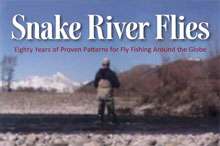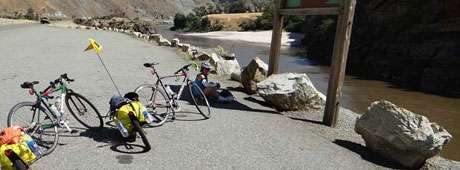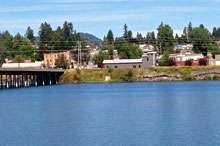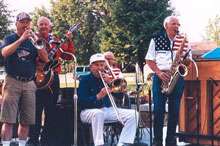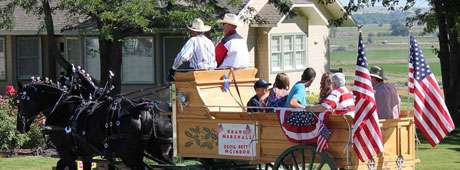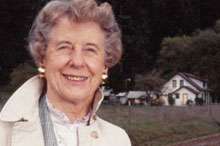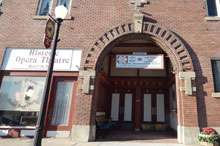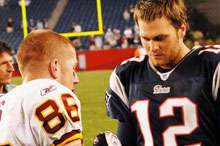When Jimmy Farris was in the fifth grade in the mill town of Lewiston, which has a population of about 32,000 strung along a stretch of Snake River slackwater, his teacher provided each student with a sheet of paper displaying an empty picture frame. The kids were instructed to envision and illustrate their future within it.
“I drew a stick figure of a football player,” Jimmy told me. “I believe it was Lawrence Taylor. I believed that in ten or fifteen years, I would be a linebacker for the New York Giants. So when I look back, I say, ‘Wow, this was a lifelong dream.’”
I first met Jimmy in 2000, shortly after my arrival in Missoula to begin working as a sports beat writer at a local newspaper. One of my first stories was his game-winning catch in the semi-finals of the Division I-AA national championships for the University of Montana, where he had accepted a football scholarship. His grab catapulted the Grizzlies into the national championship game, and the celebration reverberated throughout the city. I remember a group of college kids spray painted, “Who Let Jimmy Farris Out?” on the front door of one of the rentals next door to me. Jimmy went on to become a Division I-AA All-American at wide receiver.
Missoula and Lewiston are separated by one of the slowest, most decelerated four-hour driving stretches in the United States. Since the Lewiston Tribune doesn’t cover western Montana and the Grizzlies’ games aren’t televised in Idaho, the people of Lewiston were surprised when the undrafted Farris signed a free-agent contract in the National Football League. He was invited to attend the San Francisco 49er’s pre-season camp for the longest of shots of making the roster of an NFL team.
“Grizzly fans saw me play for the last five years, and they expected me to get a real legitimate shot. The people in Lewiston were more surprised that I’d made it. The reaction was, ‘Wow, really?’ A lot of people in Montana were more like, ‘Danged right he made it.’”
Nobody outside his family and closest friends in Lewiston, or his fans in Missoula, figured Jimmy had a shot at making the San Francisco 49ers’ final cut. Well, nobody except for Jimmy. His stay was brief. But being released by the 49ers turned into a stroke of good fortune. During the playoffs a few months later, he signed with the Tom Brady-led 2001 New England Patriots, and his rookie campaign ended with a Super Bowl XXXVI championship ring.
One year earlier, Jimmy had been sitting in his apartment in Missoula wondering if he was ever going to make it to the NFL.
His wildly ambitious aspirations had been nurtured early by his hardworking parents in Lewiston. “There is no question about it, I have a pair of really good parents,” said Jimmy, who is now thirty-five. “I’ve kind of lived the American Dream from the very beginning. And a lot of that is because I’ve had a strong sense of family, a strong support system, and a strong community in Lewiston.”
Sharon and Bob Farris have been married for forty years. Bob’s background is in education. He served as a teacher, principal and superintendent for three decades. Jimmy, the youngest of the couple’s five children—three boys and two girls—was born on April 13, 1978.
“My dad was always right there,” said Jimmy. “From a young age, I appreciated the influences of my teachers and coaches. And it’s amazing that growing up in a small town, I was afforded every benefit of having great people who molded and shaped me.”
One of his earliest memories is of Sharon instructing tap and jazz dance classes out of a makeshift studio in the basement level of the family home. Bob laid down a hardwood floor and Sharon tutored until she settled into a lengthy career at a large health insurance company.
Jimmy’s parents did their best to provide their tightly-knit brood with clothing, food, and, whenever possible, the extras, like cleats and basketball shoes.
“It was definitely a challenge to raise five kids on a teacher’s salary,” Jimmy told me. “There were times when Grandma would go down to the community center to pick up our cheese, peanut butter, and powdered milk. It was memorable seeing both of my parents doing everything they could do to provide what we needed. Still, there was a need for assistance.”
Jimmy’s life has been a slugfest from the opening bell. At Lewiston High School, he lettered in football, basketball, and track. In his sophomore year, he helped to lead the Lewiston Bengals to their first Idaho High School Football State Championship. As a senior, the team again made it all the way to the state championship game, and on the basketball team, he was named most valuable player.
“I would like to make sure people have the same opportunities that I’ve had,” he said. “There are a lot of people who don’t have a ladder to climb like I did. It’s hard to pull up your bootstraps when you don’t have any boots. I was able to accomplish some really cool things, and I overcame a lot of odds. But I also had so many things go right for me. Nick Menegas influenced me more than any other person ever has. He was the one who provided me with the work ethic necessary to go to the pros.”
Menegas coached the high school football team from 1986 to 2009. “I first remember Jimmy when he was a ball boy with my son, Michael, back in 1986,” he told me. “He has always felt like an adopted son, and he has been like a son from day one. It’s been great watching him evolve through the years, athletically, spiritually, and physically. One thing about Jimmy is that he is a self-made individual, and when I coached him, he never missed a weight session. He was dedicated in his physical and mental preparation, and he was always asking, ‘How can I get better?’”
Throughout his tenure as a coach, Menegas had heard many kids tell him that one day they would play in the National Football League. When Jimmy was in the ninth grade, before he had even played a single down, the youngster told his coach he had that very same plan.
“I believed him,” said Menegas. “The difference was the look in his eyes. It was a look that told me not to count him out of anything.”
Farris said that the Patriots 20-17 victory over the St. Louis Rams in the 2002 Super Bowl happened so fast it was all a bit of a haze. On February 3 that year, he stood on the sidelines of the New Orleans Superdome field, part of a dynasty-to-be team, full of emotion as he watched the lovely Mariah Carey sing the national anthem.
“We didn’t have the two weeks off before the Super Bowl that year,” he recalled. “I remember that we won the [conference] championship game, we flew home, and the next morning, we watched some film. We then flew to New Orleans, and immediately we were into Super Bowl week. I didn’t have time to do much of anything. I changed voice mail to something like, ‘If you are calling to say congrats on the Super Bowl, and if you are not a blood relative, and are calling for tickets, they are fifteen hundred bucks.’ I barely had time to talk to my parents.”
He spent six seasons in the NFL, including three with the Atlanta Falcons and two with the Washington Redskins. His family kept close tabs on his career. His mother Sharon even once called Atlanta Falcons’ head coach Jim L. Mora and pleaded with him to give her son more playing time. Continue reading →
